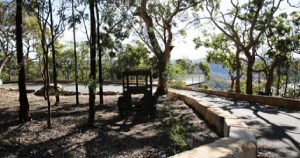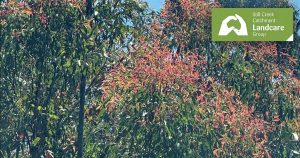By Lachlan Turner
Surprisingly, some winter wildflowers have an extended flowering period which can commence in mid Autumn and last through to mid Spring. One such plant is the Green Spider Flower (Grevillea mucronulata).
It can be a low spreading shrub but at times reaching an overall height of 1.5 meters when conditions are favourable. Flowering can occur between April and November.
The flowers are predominately green in colour and as such are not easily noticed, as they tend to cluster in groups towards the ends of branchlets amongst leaves of a similar colour. The flowers also have reddish coloured hairy styles.
Frequently, the most visible sign of this plant is its spent flowers that reveal a brown coloured seed pod which may be covered in short hairs.
Another feature of this plant is its reddish coloured branchlets also covered with small hairs. The leaves too may be covered with small hairs.
This Grevillea is actually quite widespread throughout the Hills region preferring open sclerophyl forest and woodland. It is able to thrive in both sandy and clay soils.
An unusual characteristic is that on many occasions the leaves of those plants growing in sandy or clay soils are markedly different in shape, ranging from an oval shape to a narrow shape sometimes with a pointed tip.
Whilst this Grevillea has many relatives that grow in the same region and in similar habitat, there is not one that could be mistaken for the distinctive greenish colourations of this plant’s flowers.
The flowers may not be as dramatic as some of the hybrid garden varieties, but closer examination reveals an intricately and delicately structured form.
A 50c Australian postage stamp depicting the Green Spider Flower was issued in February 2007.








